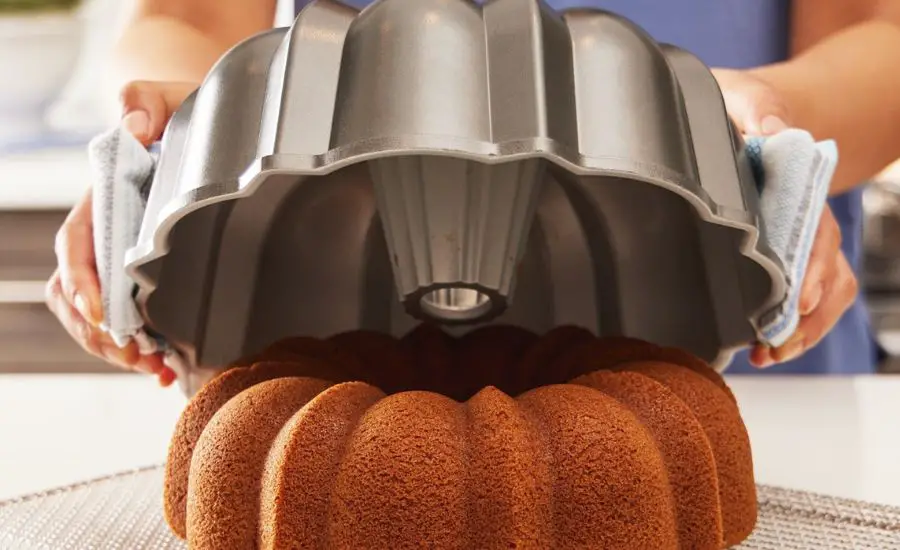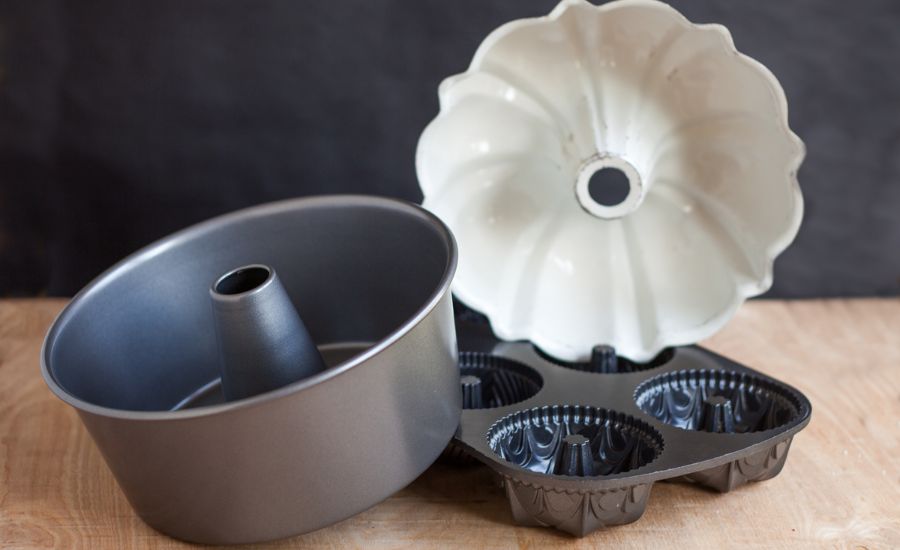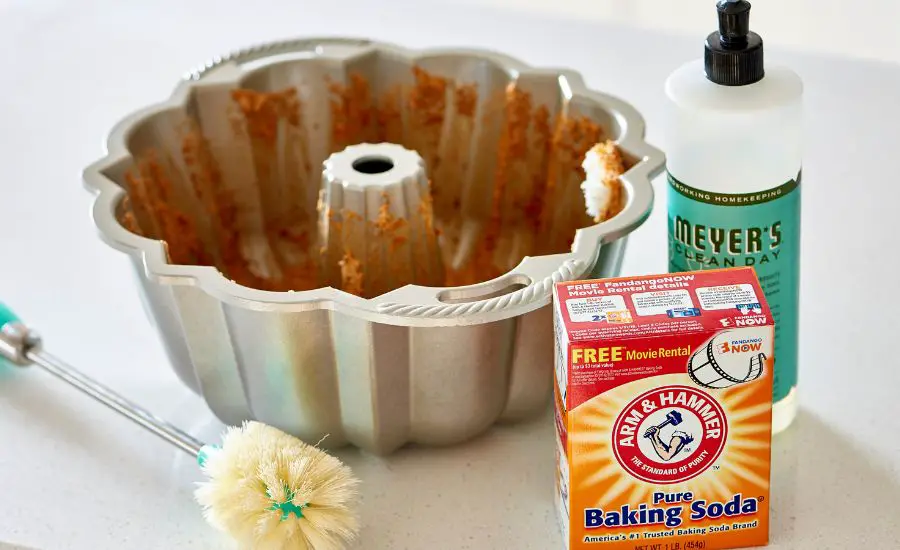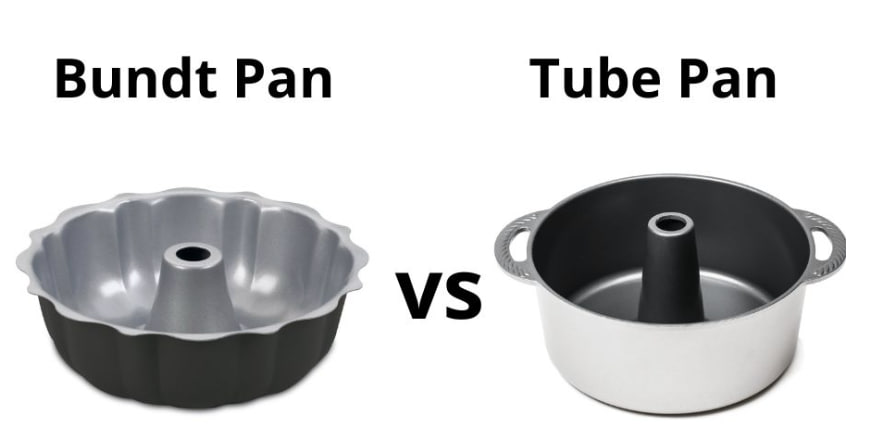In this article, we delve into contrasts bundt pan Vs tube pan, two essential tools within the realm of baking after baking sheet.

Material and Resilience
Considering the material and durability of two pans is essential for making an informed decision.
Bundt Pan: Material Elegance
Bundt pans are accessible in cast aluminum, silicone, or coated steel.
Cast aluminum cake pans are prized for their durability and ability to distribute heat evenly, resulting in well-baked cakes with fancy designs.

Tube Pan: Simple and Sturdy
Tube pans are designed from stainless or aluminum steel. These materials give sturdiness and warm conductivity, guaranteeing that angel food cakes are baked evenly.
Whereas a few tube cake pans may have a non-stick coating, others rely on a well-greased surface for easy release. Stainless steel angel food cake pan is lauded for its durability and resistance to wear.

Tube Pan vs. Bundt Pan: Material Insights
Bundt pans are made of cast aluminum, known for its robustness and even heat dispersion. The coating enhances cake release but requires careful handling.
Tube pans are created with versatility and are offered in either aluminum or stainless steel.
These materials provide strength, being perfect for a range of cake recipes such as chiffon cake.

Design and Presentation
The design and presentation of baked delicate cakes play a crucial role, making the choice a matter of aesthetic preference.
Bundt Pans: Artistic Sophistication
Bundt pans are celebrated for their designs, ranging from classic swirls to elaborate patterns. These pans elevate the aesthetic appeal of bundt cakes, making them suitable for celebratory occasions.
The distinct shape of a Bundt pan imparts a decorative addition to the cake, often eliminating the necessity for elaborate frosting or decoration.
Tube Pan: Simple and Classic
Tube pans provide traditional and timeless displays. They showcase the simplicity of well-baked cakes.
The angel food cake pan ‘s central tube guarantees even baking, resulting in a cake with a uniform scrap structure.

Bundt vs. Tube Pan: Design Perspectives
Bundt pans are favored for occasions where an elegant appearance is paramount.
Tube pans offer a classic presentation that highlights the natural beauty of a well-baked cake.
Size and Capacity
Determining the size and capacity of pans is crucial for achieving accurate proportions in baked creations.
Bundt Pan: Varied Sizes
Bundt pans can be found in a wide range of sizes to determine the one that best suits the recipe and serving requirements. Standard Bundt pan sizes typically vary from 6 to 15 cups.
Tube Pan: Standard Dimensions
Tube pans vary from 9 to 12 cups.
The standardized dimensions make adapting recipes to different tube pans easier without significant adjustments.

Bundt vs. Tube Pan: Dimension Considerations
Both bundt pan and tube pan offer flexibility for adapting recipes while maintaining consistent results.
Baking Performance
Assessing the baking performance of angel food cake pans is crucial for achieving the desired texture and taste in cakes.
Bundt Pan: Even Baking with Flair
Bundt pans are designed to ensure even baking by leveraging their pattern and central tubes. The scalloped edges contribute to bundt cakes with a well-defined crust and crumb.
Tube Pan: Uniform Texture and Moisture
A tube pan is effective in achieving uniform baking, especially in angel food cake recipe. The central hollow tube enables uniform circulation of hot air around the angel food cake, leading to an even texture.
Tube pans are also known for promoting moisture retention, contributing to the airy consistency characteristic of angel food cakes.
To provide convenience in the cake’s removal from the pan, many recipes incorporate egg yolks and beaten egg whites.
Bundt vs. Tube Pan: Baking Insights
Both pans provide moisture retention for recipes such as angel food cakes and contribute to even baking.
Once the bundt or tube cake emerges from the oven, placing it on a cooling rack allows air to circulate the entire cake, preventing the formation of excess moisture.

Cleaning and Maintenance
Considering the cleaning requirements of a bundt pan and a tube pan is essential for the longevity of these baking tools.
Bundt Pan: Non-Stick Care
Bundt pans simplify the cleaning process by facilitating easy take out of bundt cake. To maintain the effectiveness of the surface, it’s essential to avoid abrasive materials during cleaning.
Some pans are dishwasher-safe, but handwashing with a mild detergent can preserve the non-stick properties.
Tube Pan: Practical Cleaning
Cleaning tube pans is uncomplicated. Because of their simpler designs, angel food pans are often easy to clean with minimal residue.
Handwashing with a mild detergent and a soft sponge maintains the integrity of the pan over time.
Bundt vs. Tube Pan: Cleaning
Bundt pans need gentle care, therefore handwashing is recommended.
The tube pan can be cleaned with minimal residue. Handwashing is typically sufficient for maintaining the pan’s integrity.

Conclusion
Bundt pans are renowned for their elegant presentation, making them ideal for special occasions where visual flair matters.
Tube pans cater to a wider range of recipes, especially those that prioritize even baking cake and moisture retention such as angel food cake.
Whether you favor the style of a Bundt pan or the flexibility of a tube pan, your choice will impact the delightful manifestations that develop from your Dutch oven.
FAQ
Can I use a Bundt pan instead of a tube pan?
A bundt pan can serve as an alternative depending on the recipe. But, its patterns may impact the texture of sponge cakes.
Can I use a Bundt pan instead of a tube pan for pound cake?
A Bundt pan can serve as a replacement for a one-piece tube pan when preparing pound cakes. But, purchasing a two-piece tube pan and replacing the bottom part as required is advisable.
What can I substitute for a tube pan?
In the absence of a tube pan, consider using alternatives such as an angel food cake pan or a springform cake pan.
What is the point of a bundt cake pan?
Its central tube guarantees warm conveyance, advancing uniform bundt cake baking. Bundt cake pans feature non-stick coatings for simple release, simplifying the presentation of airy cakes.
What’s the difference between a Bundt pan and a regular pan?
A Bundt pan is uniquely shaped with ornamental elements, created for bundt cake recipes. In comparison, regular pans come in diverse shapes with sleek surfaces.
What is special about a Bundt pan?
A Bundt pan stands out with its unique ring shape and detailed patterns, and the central tube of the pan plays a role in achieving the cake’s dense texture.

My name is Emma Brown, more than 15 years of my life is related to cooking, and i know all about selecting the right kitchen equipment for certain processes.
I will help you learn more about dishes and give you knowledge on how to extend the service life of cookware.

